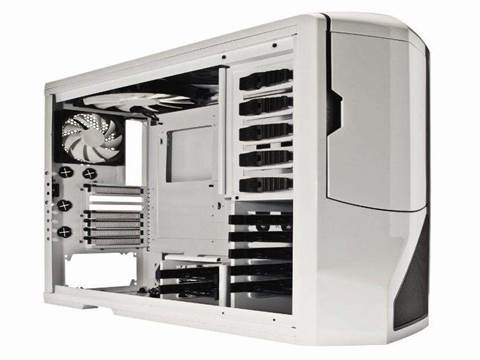We designed the Ultimate PC's storage with the motherboard in mind; Intel's DX58SO includes RAID controller logic from Marvell, which by default is disabled in the BIOS. After enabling it and downloading Intel's Rapid Storage Technology software (which is free), we were able to configure the system's six hard drives as two separate RAID arrays-one for booting the operating system and the other for storing data.
We configured a pair of 128-GB solid state drives (one from Imation, the other from Corsair) as a RAID 0 array and designated it as the boot volume. We selected RAID 0 to maximize performance and minimise boot and system access times. That's where we installed the 64-bit version of Windows 7 Ultimate. The Imation 128-GB M-Class SSD drive sells for around $US199. The Corsair drive, which offers slightly faster read and write times than Imation's, can be found on the street for around $US219.
For data storage, we installed four Hitachi 1-TB 7,200 RPM SATA II drives, three of which were configured as a RAID 5 array, and one kept as a spare. We would have used all four, but we ran out of internal SATA ports. The motherboard offers six plus two eSata ports, and connecting the LG Blu-Ray/DVD writer was nonnegotiable. Hitachi's 1-TB SATA drives, which support a 3Gb/s transfer rate, sell for around $US69 on the street. The Windows 7 Ultimate 64-bit OEM edition sells for around $US179.
NEXT: Cabinet




_(11).jpg&h=142&w=230&c=1&s=1)





.jpg&w=100&c=1&s=0)
_(8).jpg&w=100&c=1&s=0)







.jpg&q=95&h=298&w=480&c=1&s=1)


.jpg&q=95&h=298&w=480&c=1&s=1)


